Porto, 330 km north of Lisbon, is the second largest town in Portugal, and a Unesco World Heritage site. Arriving there by air is pleasant. The airport is not too big, which makes everything easier. Passport control is fast, and a 5 minute walk takes you to the Metro station, where you can take a modern fast tram into the city center for less than $5, and you are whisked there in 30 minutes.

Looking out on the Rio Douro from the Ponte Luiz I bridge.

The Ponte da Arrabida, the one of the 6 big bridges of Ponte closest to the ocean. They are all graceful.

This old railroad bridge was designed by Gustave Eiffel, and at the time of its construction in 1877 was the longest single-span arch in the world. It also cost ⅔ as much as the nearest other proposal, being cutting edge engineering for the time. It no longer is in service, but is being preserved for historic reasons.
I took an immediate liking to Porto. A week here should be lots of fun. It is a very old city, with a distinct local flavor. Much that is traditional is still alive here: neighborhood greengrocer shops, little cafes, and bakeries. Small town European village kind of life, good to see it still happening.
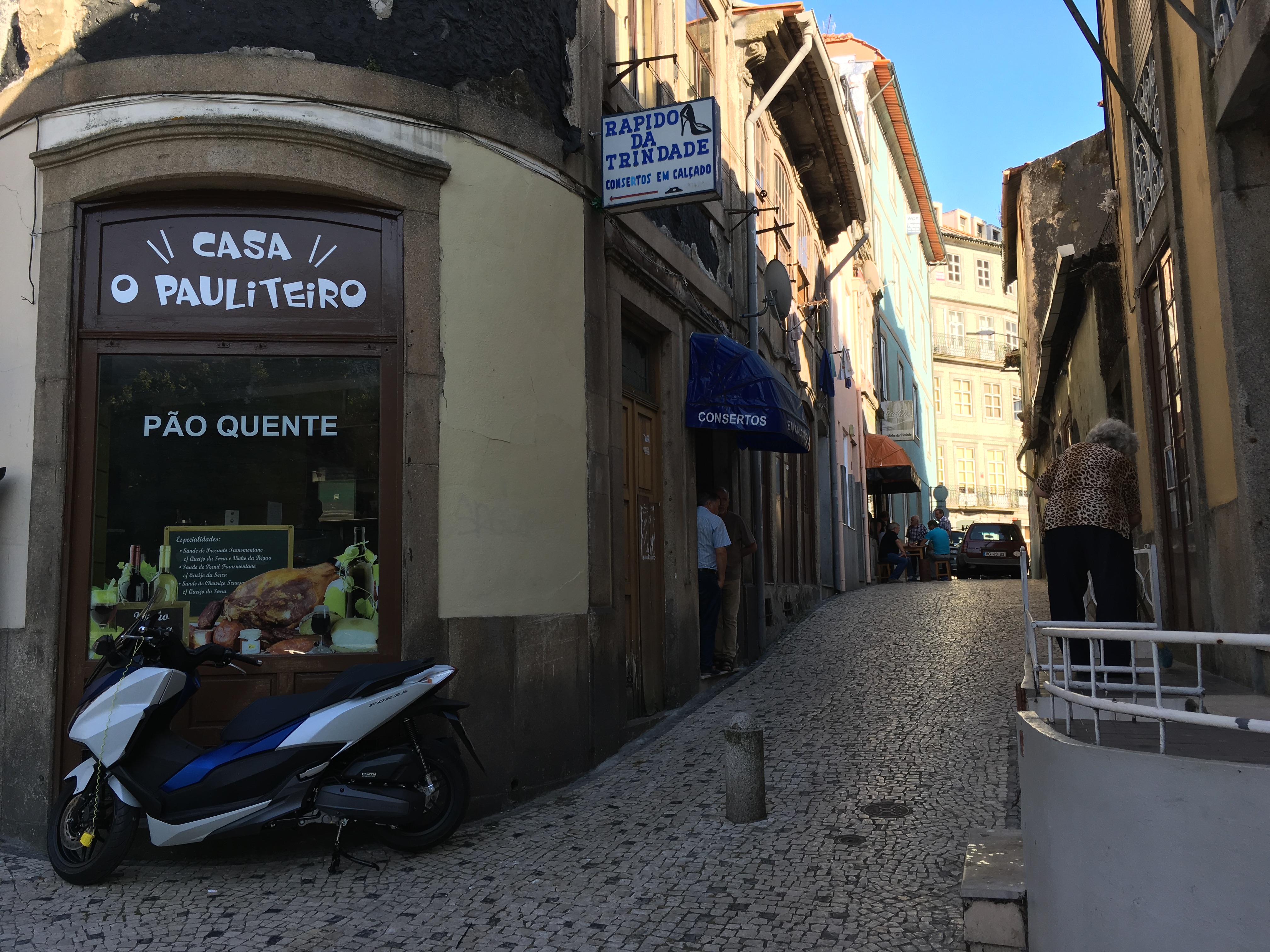
A typical older street in my neighborhood, Trindade.

You can find greengrocer stands like this in every neighborhood. Great tasting Portuguese vegetables at bargain prices.

Lots of big old churches, too. The blue on white tiles are a Portuguese tradition.

A panel in the train station lobby. Many of the plentiful tile veneers are historical pictorial murals.

The Trindade neighborhood church.

Another local church.

Not a church, but I’m not really sure what it was. It now houses the Porto Tourism Offices.

Porto is a very old city, with lots of traditional buildings. The far building on the left is Banco du Portugal.
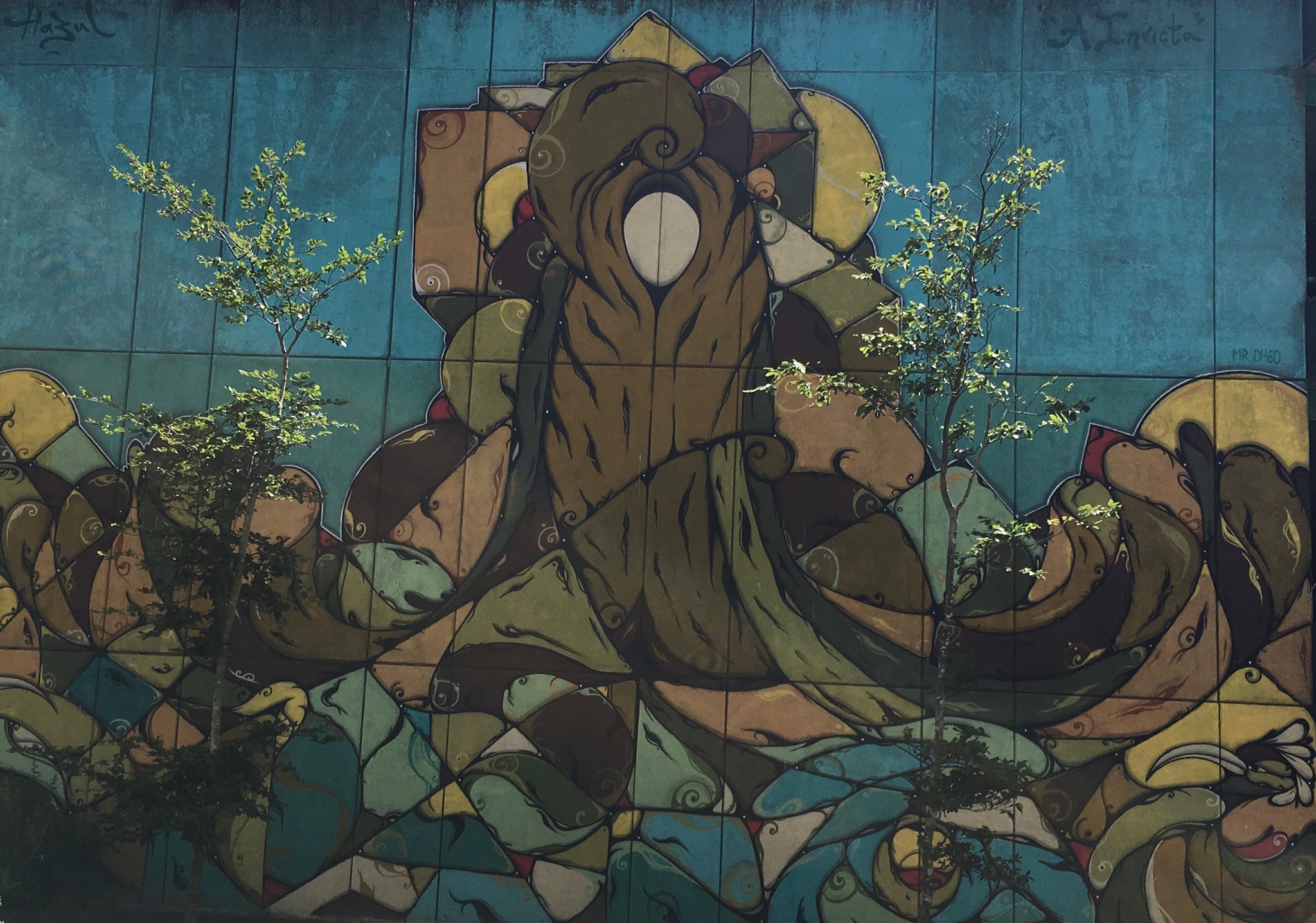
And artistic graffiti, a big deal in Portugal. If it were all this good, I’d be a big fan. It is not.
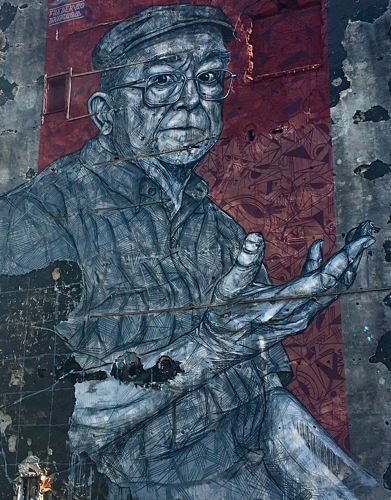
The Good
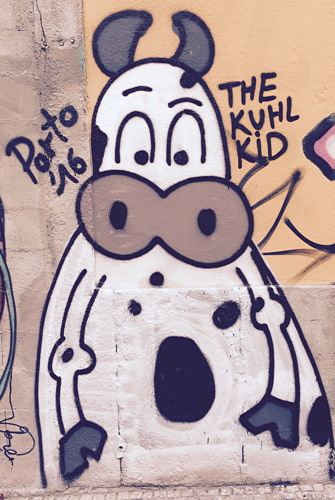
The Bad

And the Ugly.

Porto is hilly. A number of very big bridges connect the high levels of the city. The Ponte Luiz I was finished in 1886, and is 146 feet above Rio Douro, which runs through the middle of Porto. Apparently they’re not concerned about jumpers, and it’s too high to high dive! A little science: if you dove off, you’d hit the water 3 seconds later, going 65 mph. Not a good idea.
In the background here is Gaia, where all the major Port cellar are located.
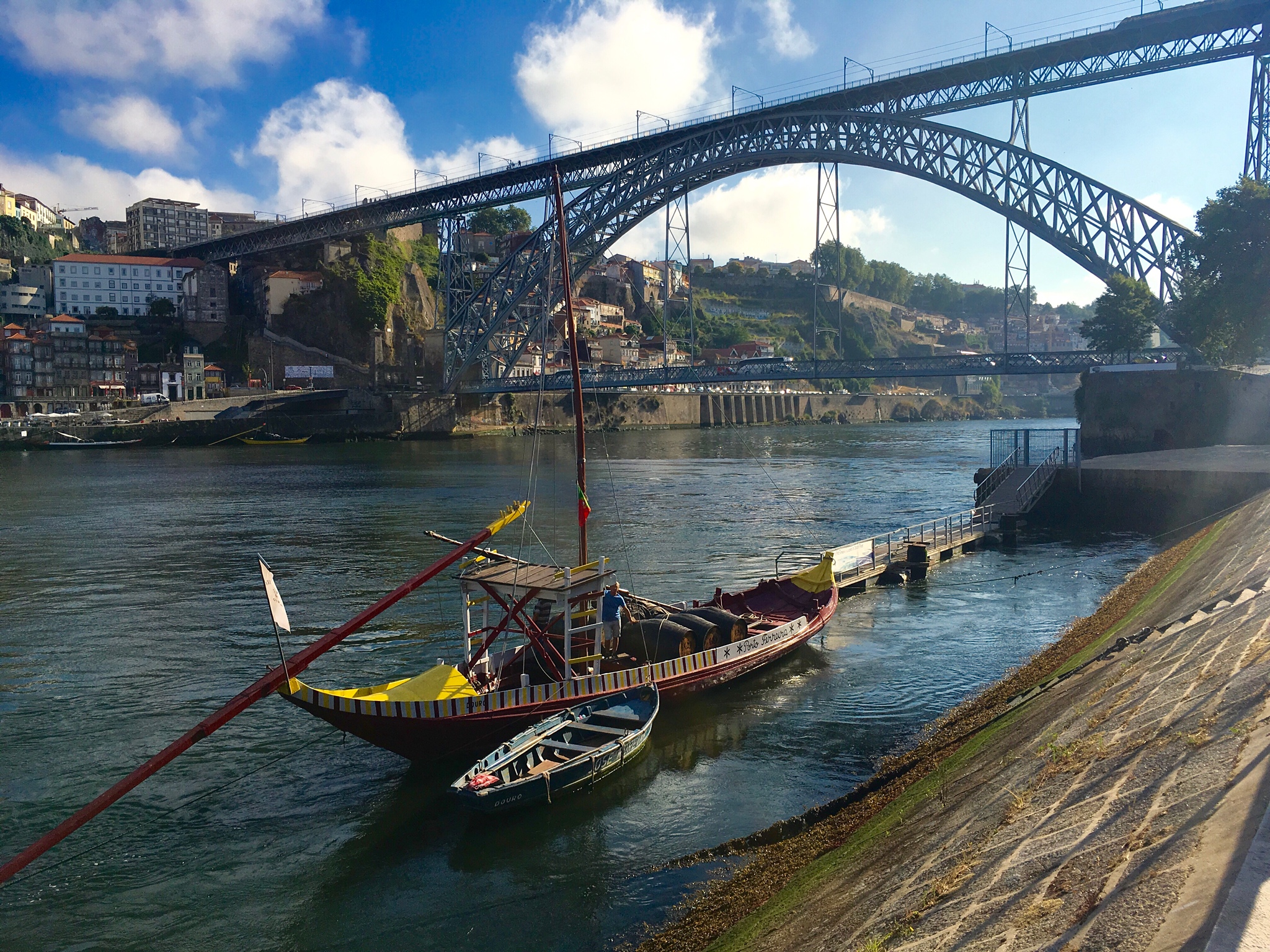
When it was built, Ponte Luiz I was the widest span of this type in the world. you can see Port barrels in the boat. I think they’re there for show. These old-style boats are used for river sightseeing excursions. The big pole going out the back of the boat is their rudder.

The north bank near the bridge. You can wind your way up the stairways, about 300 steps up.
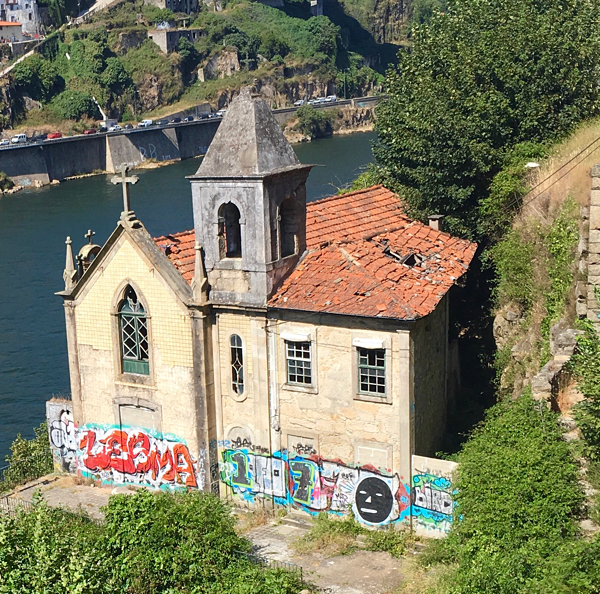 An old abandoned church along the river.
An old abandoned church along the river.

Narrow back streets of cobblestone with traditional buildings.

Card games are popular in this small park.

Local men enjoy a drink of wine in a street cafe. The faces are familiar, particularly if you’ve lived in Hawaii. There are many ‘Portugees’ there, including my good friend George Carvalho, a family name you see on historic wall plaques.
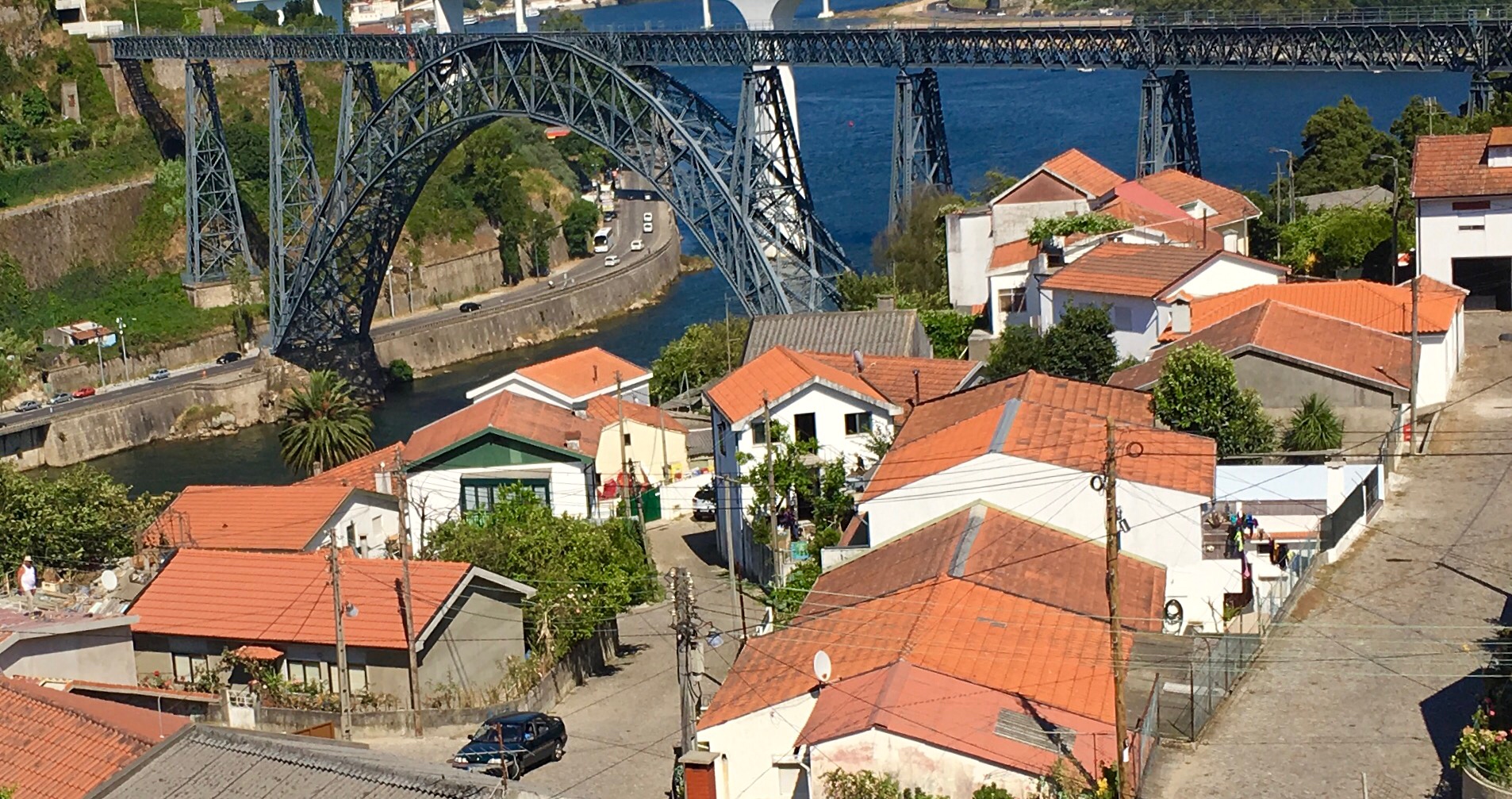
This French-designed steel bridge is even older than Ponte Luis I bridge.


Another view of the city and the Ponte Luis I bridge.
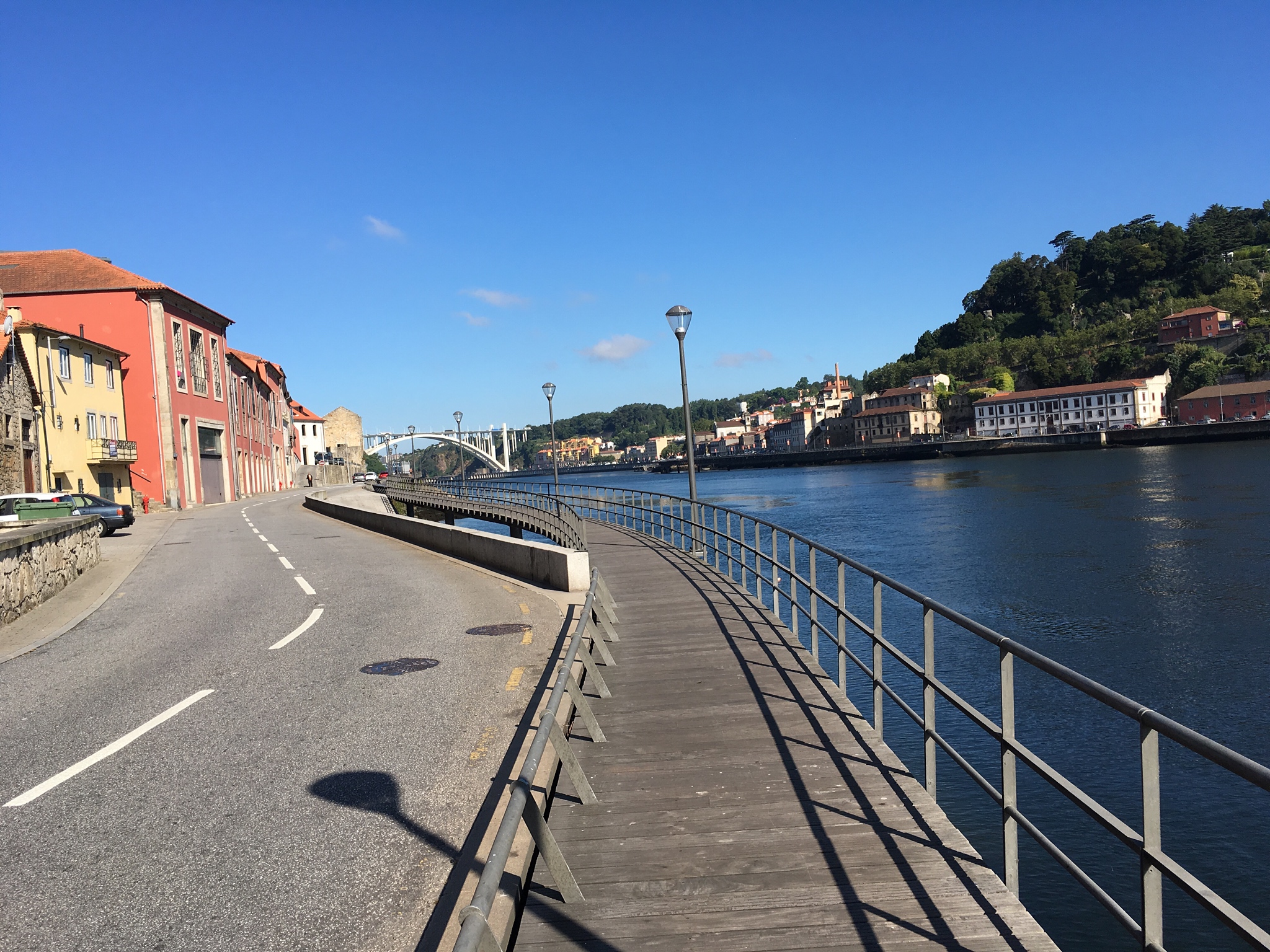
As you head west from the Gaia area, you can walk along the river towards the ocean. Fishing from this walkway is very popular, so there are holders built into the deck for fishing poles about every 6 feet!
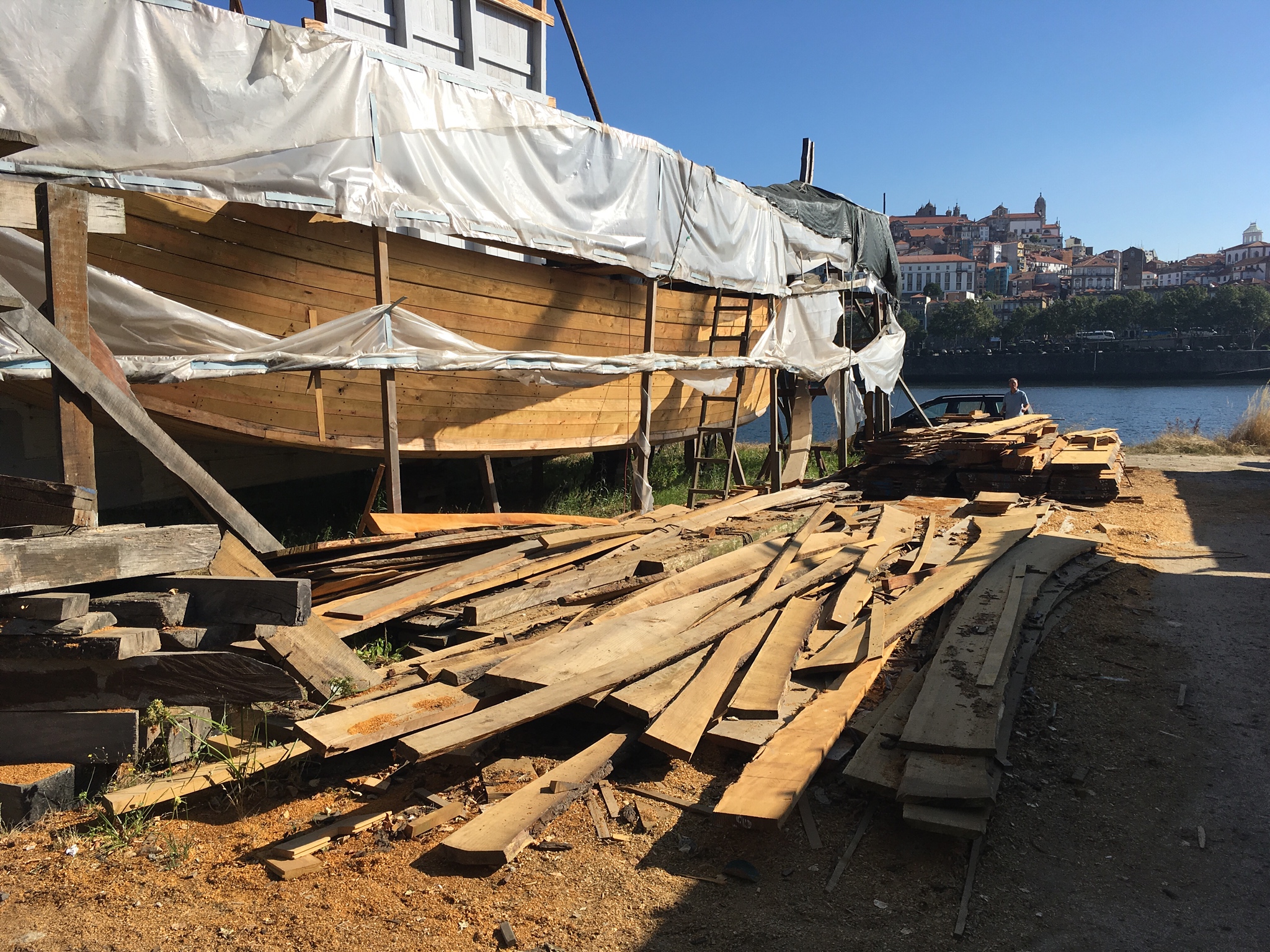
I stopped at a small riverside boat building yard. These boats are framed with a hard African wood, and the hull is planked with pine boards.
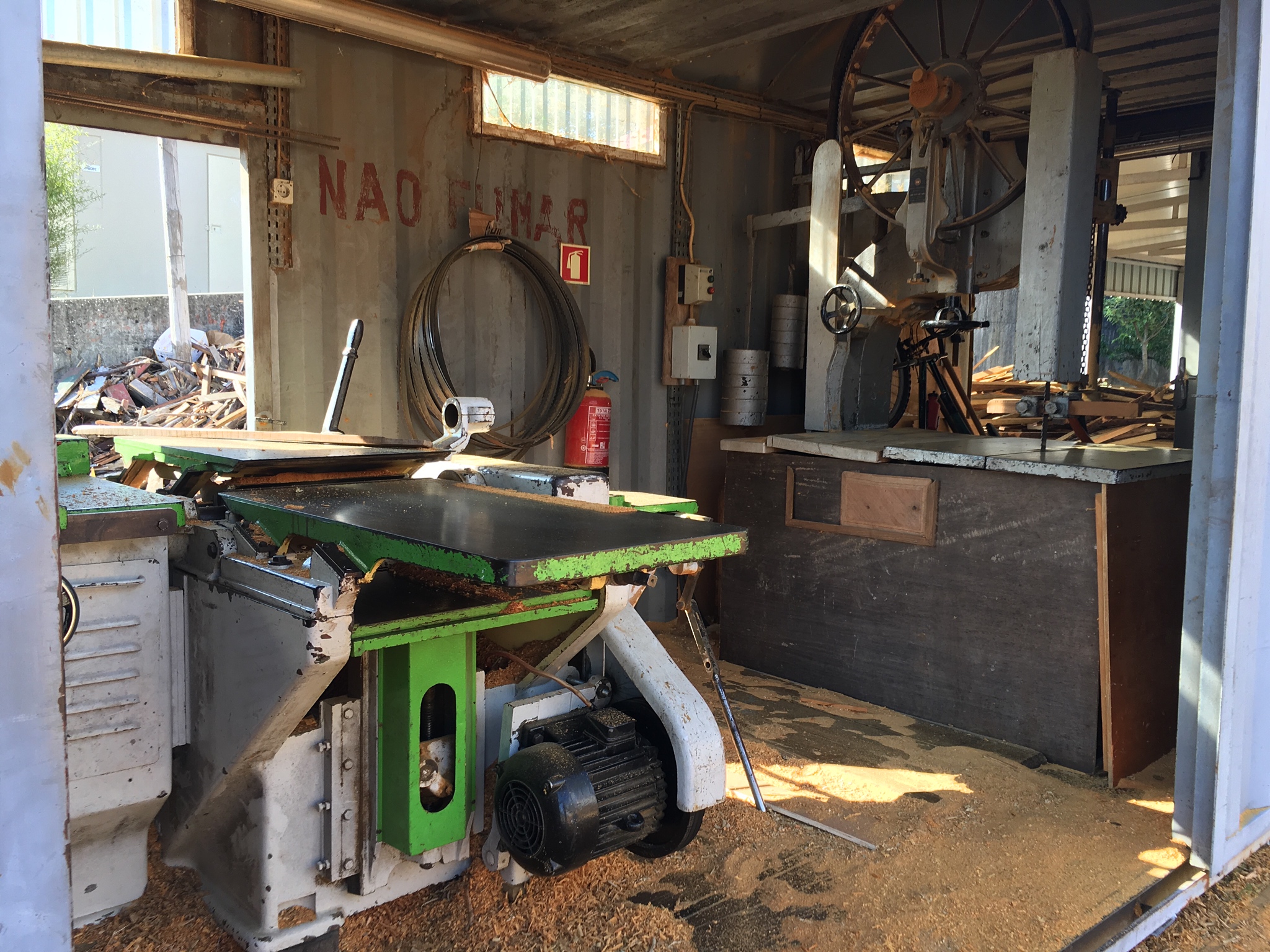
Their two main tools: a big planer, and a hefty bandsaw for cutting all the curves.


Old buildings with a few satellite dishes.


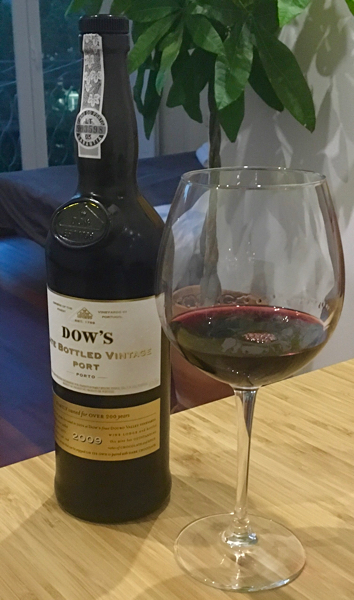
Of course, Porto is the town that invented Port wine. Here’s a good Port NOT in a Port glass, as I didn’t have one available. I can tell you it is very good taken in small quantities: flavorful, sweet and strong.
Portugal also invented a very unusual style of ballad, Fado:
I hope to hear some authentic Fado in a local cafe while I’m here. It is a form of music characterized by mournful tunes and lyrics, often about the sea or the life of the poor, and infused with a sentiment of resignation, fatefulness and melancholia. I find it quite compelling.
Some more good graffiti:


Another lovely blue sky day here in Porto, so I took the tram out to the beach. Portugal lies on the west coast of the Iberian peninsula, west of Spain, and so has an Atlantic coast beach. The water is cooler than Hawai’i, but that doesn’t keep people from enjoying it. I got there by walking through the Porto city park, which must be as big as the one in San Francisco. It is primarily pine trees and lawn and some lakes, a rather dry parkland:
Anse = beach
Anse Aore is rather long, and was attracting swimmers, skim boarders, boogie boards and even a few surfers.
The Portuguese connections with Brazil are still strong, and you see that in the Ipanema-beach like swimwear, and even Brazilian music playing in the beach bars:
[vc_video link=”https://vimeo.com/175733997″]
I just love the rhythm and sound of Brazilian music–this is Bossa Nova style. This is a family band. The father is from Brazil, and is playing drums. The singer, Denise, was born in Portugal, and loves Porto. Like the ‘umbrella’ hat the guy on the right is wearing? Later, he got up and danced along with the music.
The following Sunday, more people were at the very big beach:
Lovely weather, too. Warm with a nice cool sea breeze.
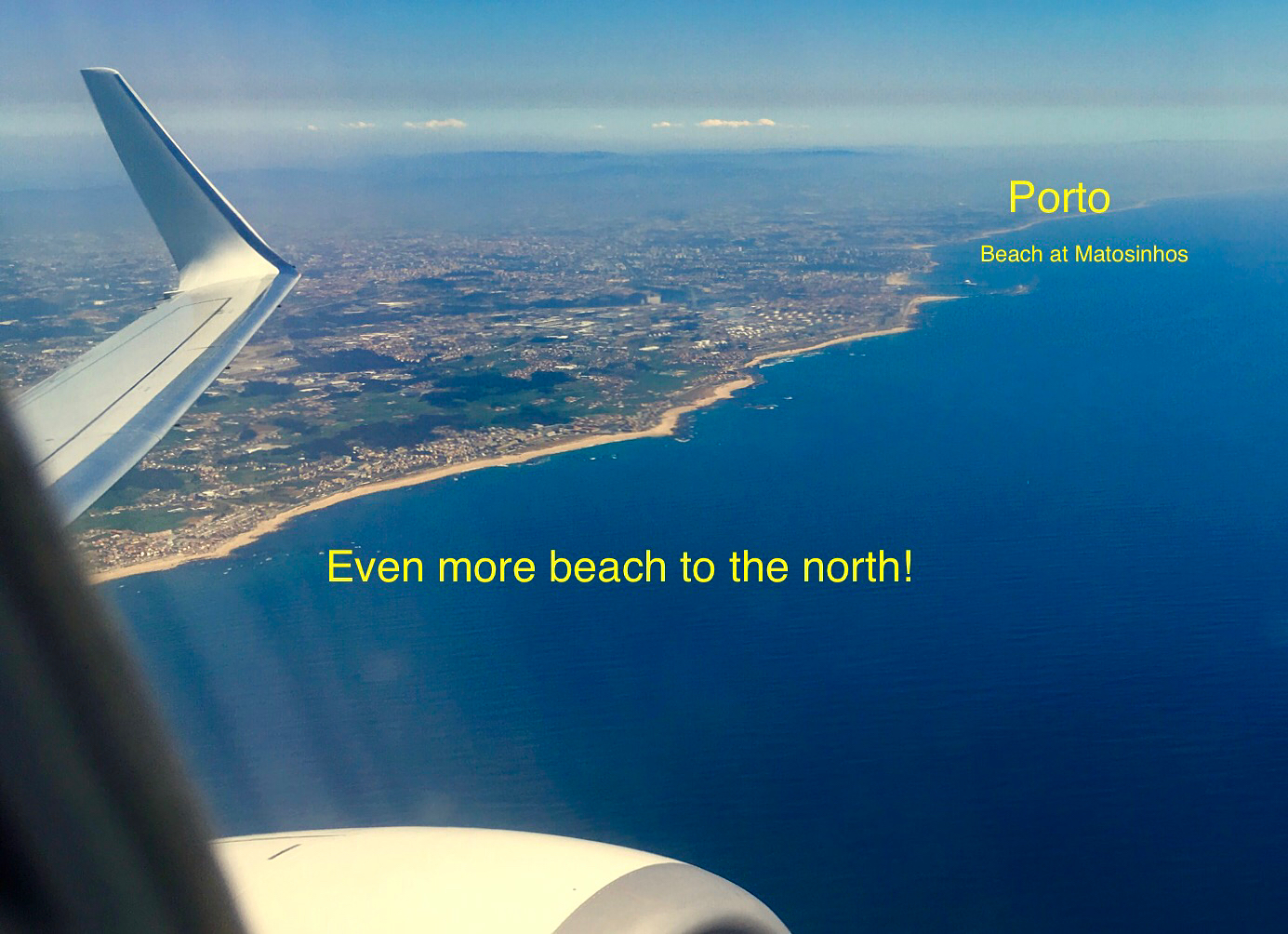
Back in the city center:
The Rosa Mota Pavilion, built in the 50s as a sports stadium, is in dire need of renovation. Sports are no longer played there (which should stand as a note of warning to cities that chase sports teams by subsidizing stadiums that have a limited useful lifetime. There should be a long-term plan for them, including what to do with them when they get old, and who will pay for that!).
The city is trying to preserve the dramatic architectural design, while turning the space to other uses. Financing is a big issue.
While having Portuguese pastry and espresso at the grounds of the Palacio Crystal, the proprietors recommended going to Matosinhos, the port area near the beach, for great seafood. I went to the place they recommended, Restaurante Salta-O-Muro. Here’s what I had:
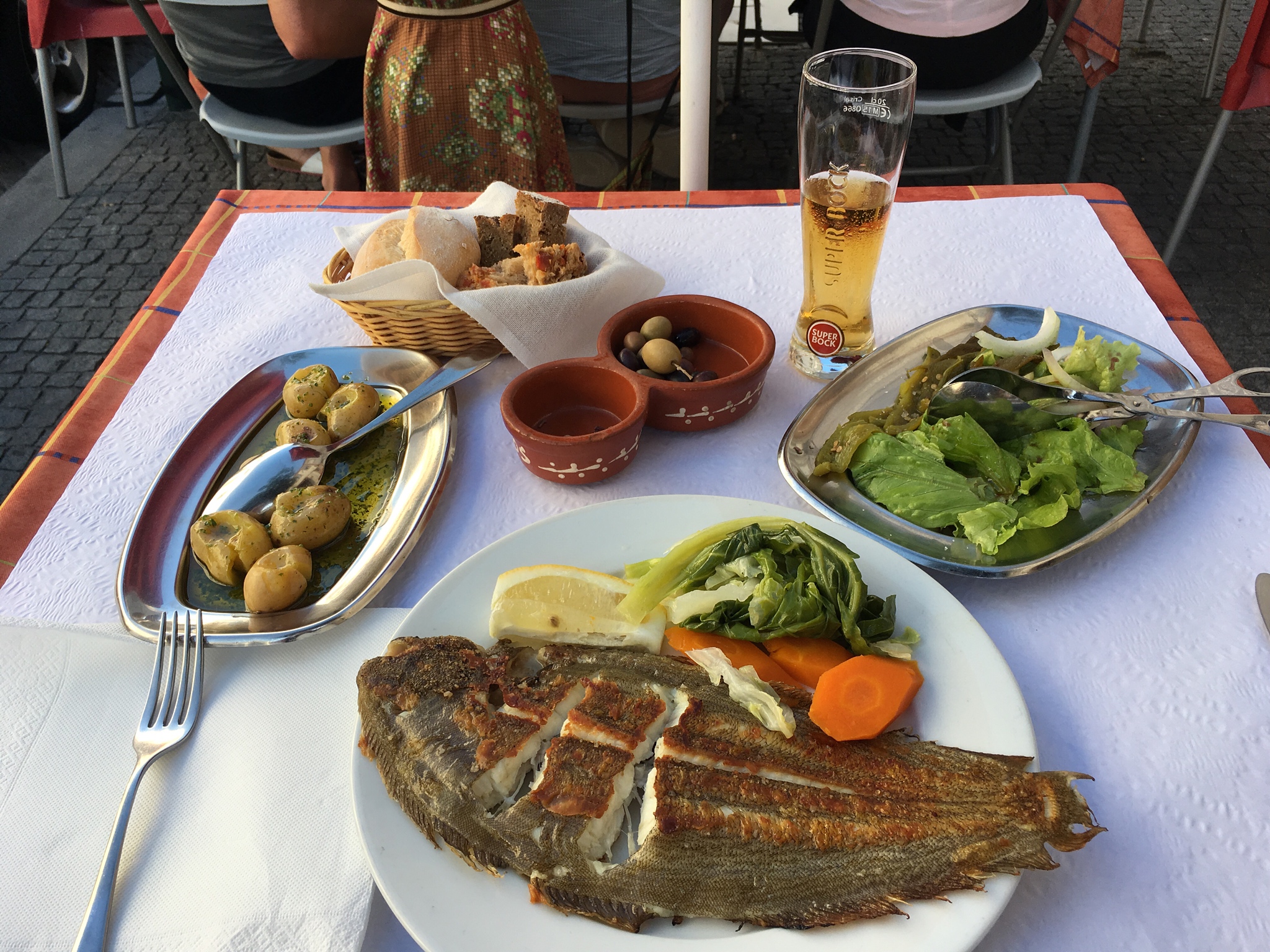
Grilled sole with vegetables, salad, roasted potatoes, beer, olives and bread. The sole, which was bigger than my plate, was grilled to perfection, one of the tastiest fish I have ever eaten, and the whole meal including tip was $21. You get very good value for meals in Porto!
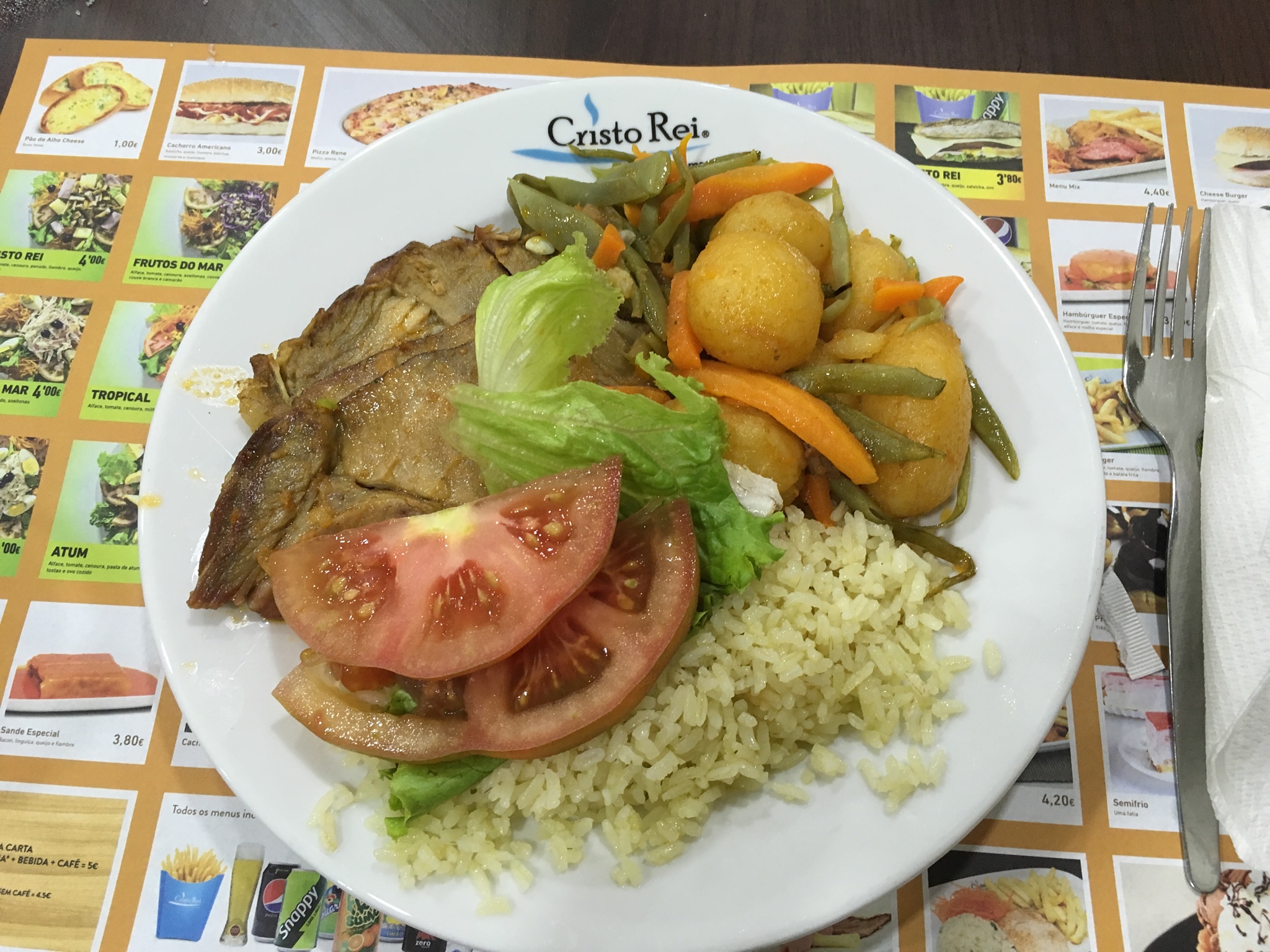
Or what $5.50 will get you with a drink in town, what the locals choose. Cannot complain!
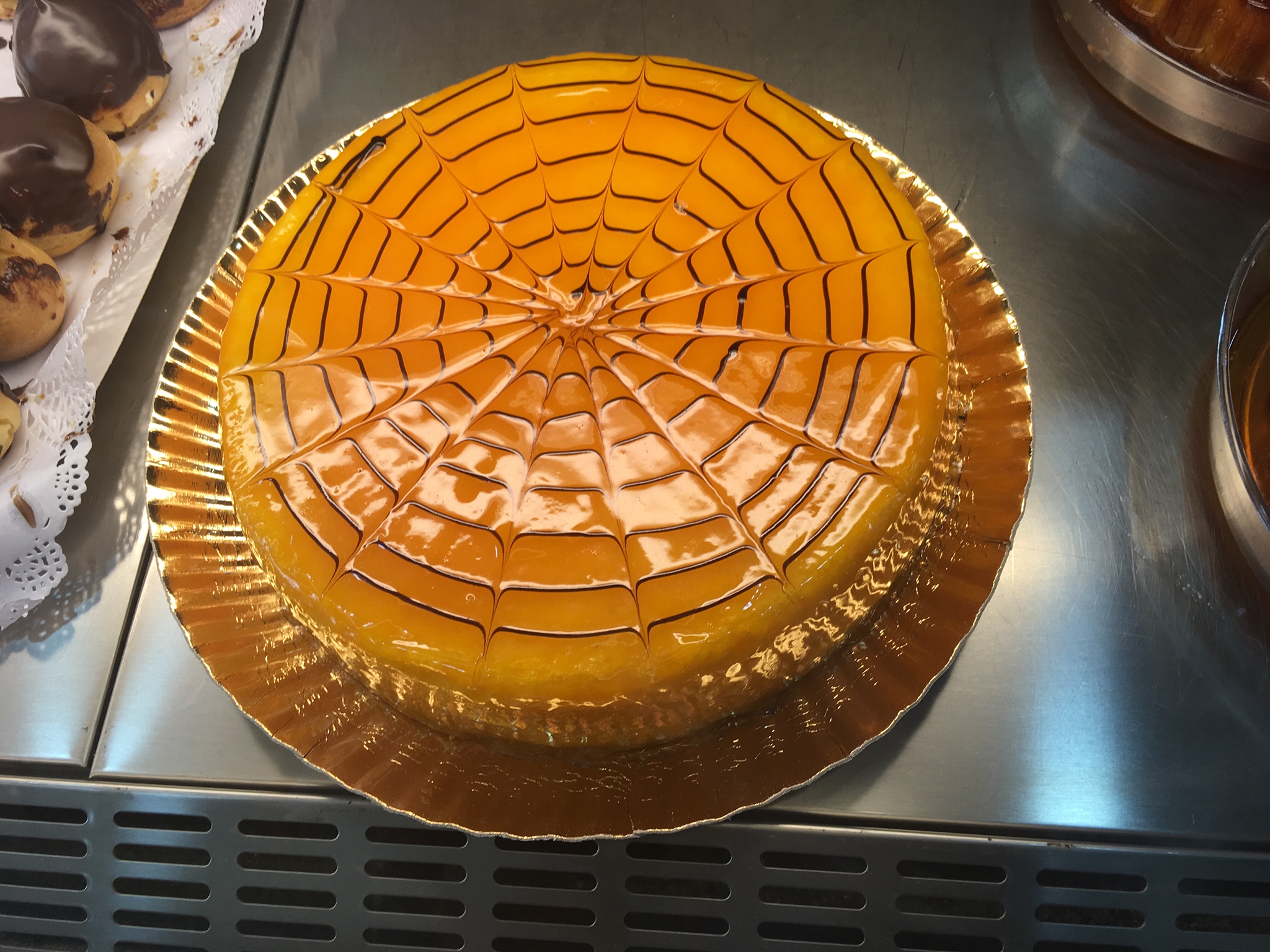
Ah, and the local sweets! So good, so pretty.
I had tried to get a dinner reservation at the best Fado place in Porto for that day, but it was fully booked. They told me that if I came around 10pm, there might be a table free. So after my lovely dinner, I took the tram back into the center of town.
The tram operates on a system where you either have a monthly pass, or buy a ticket at a machine on the platform, and then validate it at a machine before boarding. They enforce this with random checks where an official walks around the tram checking tickets with a portable machine. If you don’t have one, you are written up and fined heavily.
On the way back last night, a teenager was caught sitting across from me, apparently riding without a ticket. Two officials, one male, one female, got involved. A woman across from me started making comments presumably berating the officials for doing this. It got rather heated, and then the woman grabbed the ID badge around the neck of the female officer, and a push-shove scuffle ensued. Elbows were flying, and I decided to remove myself from harm’s way. Wow! I think the police got called, but my stop came and I did not see the end. Hot Latin tempers!
Outside the Fado restaurant, a couple from Brazil sat. They had been waiting since 8pm! We got lucky, due to a no-show, and we were ushered in and seated at a four person table right across from the singers. Casa da Mariquinhas is a narrow small space in a very old stone building, seating perhaps 40 people. As you can see, the lighting is quite dim, so I could not take video. But here is a small audio clip of the superb Fado singer who performed for us:



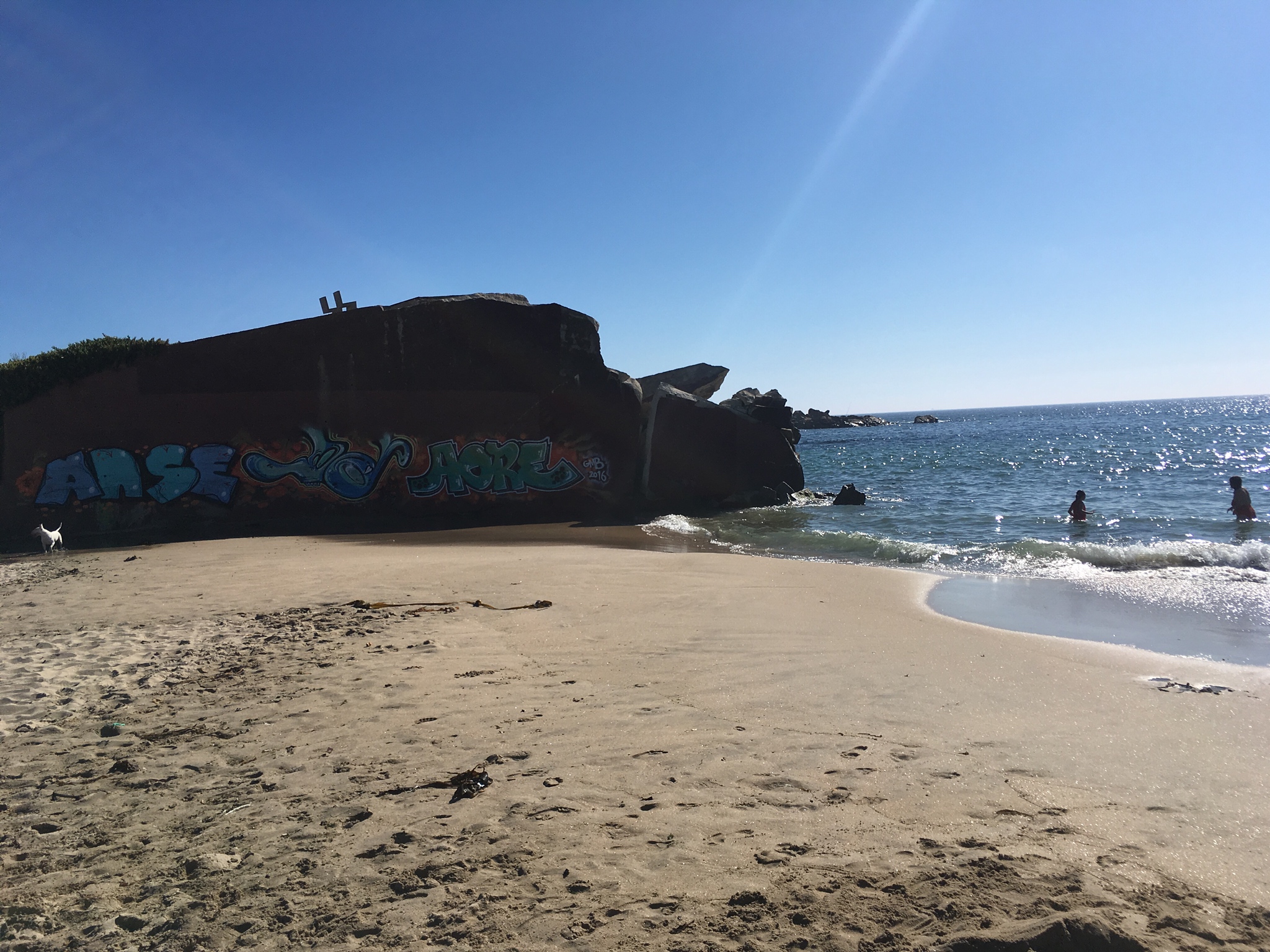
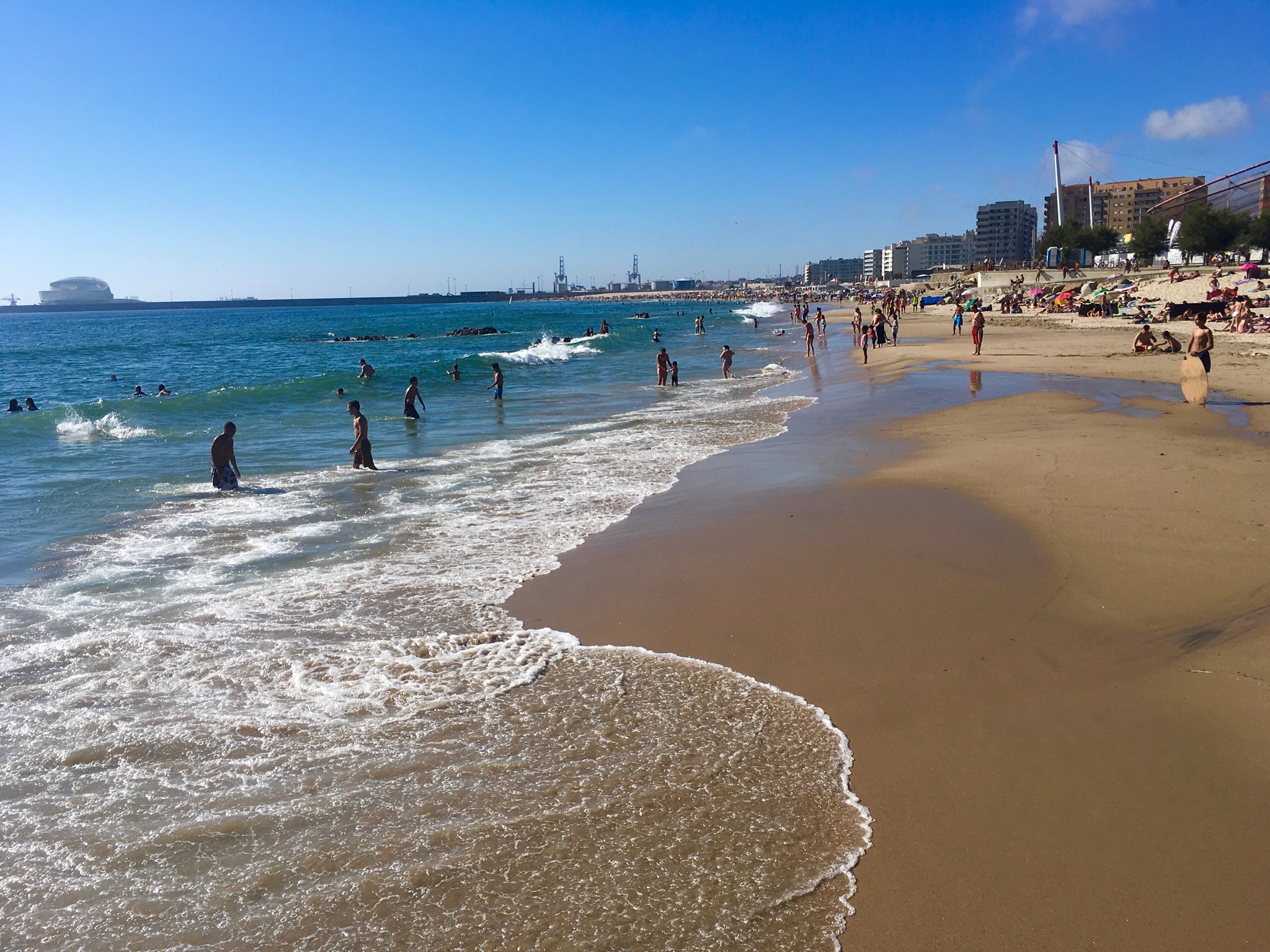


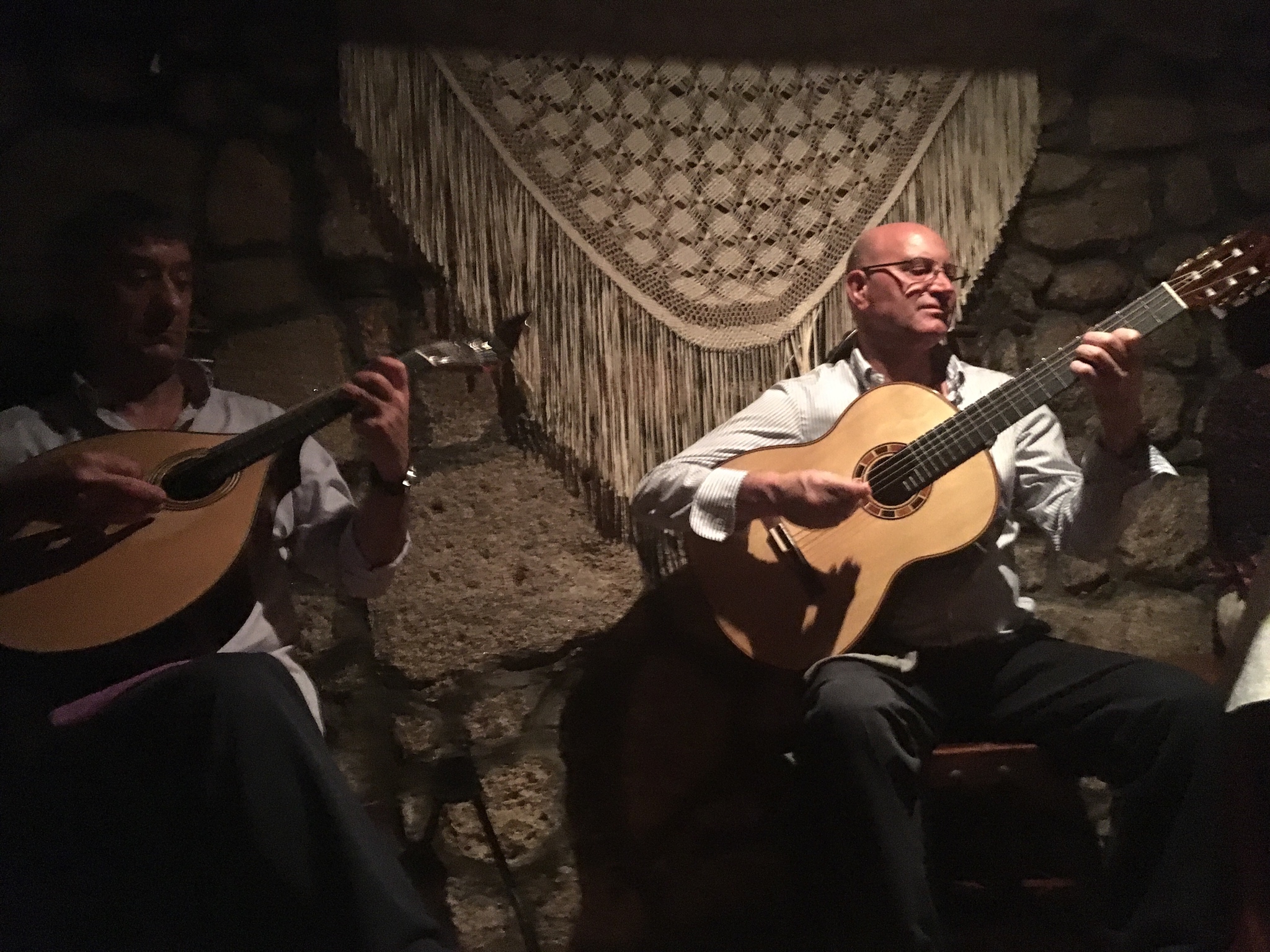
Leave a Reply
You must be logged in to post a comment.